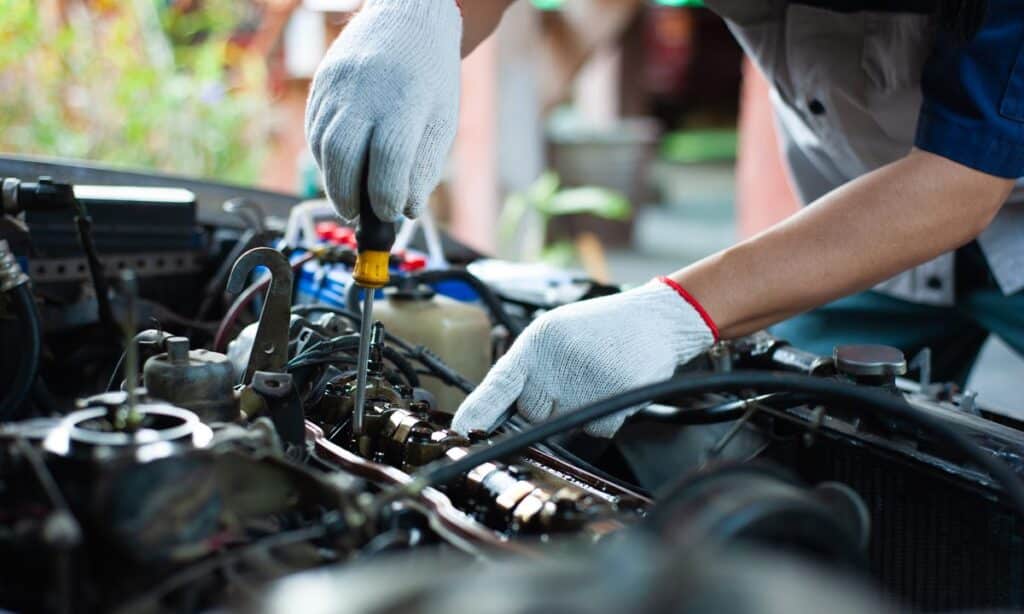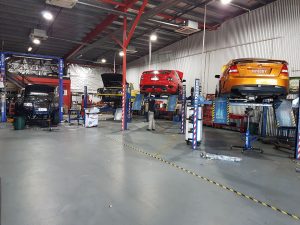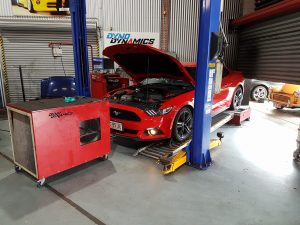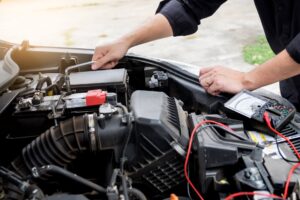
Regular engine maintenance plays a crucial role in ensuring the longevity and performance of your vehicle. One vital component that requires attention is the timing belt. This blog post aims to highlight the importance of timing belt replacement as a preventive maintenance measure to keep your engine running smoothly and avoid costly repairs down the line.
Understanding Timing Belts
A timing belt is a vital part of an engine’s internal system that synchronizes the rotation of the crankshaft and camshaft. It ensures that the engine’s valves open and close at the precise moment to allow proper combustion. Timing belts are commonly found in interference engines, where a failure could result in significant engine damage. Understanding the purpose and characteristics of timing belts is essential for recognizing the importance of regular replacement.
When you ignore the replacement of your timing belt, it could pose a significant risk to your engine’s health. As time passes, the belt can wear out, crack or even break due to prolonged use or extreme temperatures. If this happens, your engine’s valves won’t open and close at the right moment, resulting in poor performance and potential engine damage. To avoid such costly repairs down the line, it’s crucial to have your timing belt replaced as per your vehicle manufacturer’s recommended maintenance schedule. This preventive measure ensures that your engine continues to run smoothly and efficiently for years to come.
Signs of Timing Belt Wear and Damage
Recognizing the signs of a worn or damaged timing belt is crucial for timely replacement. Visual inspection is an excellent starting point. Look for cracks, fraying, or signs of excessive wear. Unusual engine noises, such as squealing or ticking, can also indicate timing belt problems. Additionally, misalignment of engine components and performance issues like poor acceleration or misfiring can be attributed to a worn timing belt.
The signs of timing belt wear and damage should not be ignored. Ignoring these signs can lead to serious engine damage and costly repairs in the future. It is important to follow the manufacturer’s recommended timing belt replacement schedule, typically between 60,000 and 100,000 miles, or every 5-7 years. Regular maintenance and inspections can help you catch any issues early on and prevent more significant problems down the line. Remember, a small investment in preventive maintenance now can save you a lot of money in the long run.
Benefits of Timing Belt Replacement
Replacing the timing belt as part of your preventive maintenance routine offers numerous benefits. Firstly, it helps prevent severe engine damage, which could result in expensive repairs or even engine replacement. By ensuring that the engine’s components work harmoniously, a new timing belt contributes to improved engine efficiency and performance. Ultimately, regular timing belt replacement provides peace of mind, knowing that your engine is well-protected.
When the timing belt is due for replacement, it is important to act promptly and not delay the process. Timing belts generally need to be replaced between 60,000 to 100,000 miles depending on the make and model of your vehicle. Delaying the replacement process could result in belt failure, which could cause significant engine damage. Therefore, staying up-to-date with your timing belt maintenance can save you a lot of time, money, and stress in the long run. Remember that prevention is always better than cure when it comes to engine health!
Timing Belt Replacement: Steps and Process
Timing belt replacement requires a systematic approach. Begin by preparing the necessary tools and ensuring safety precautions are in place. Next, remove engine components to gain access to the timing belt. Carefully inspect the old belt for signs of wear or damage. After removal, install the new timing belt following the manufacturer’s instructions. Reassemble the engine components, ensuring everything is properly aligned. Finally, test the engine to verify the correct operation of the new timing belt.
First and foremost, preventive maintenance is crucial for ensuring the long-term health of your engine. The timing belt is a key component that should be replaced at regular intervals to prevent costly repairs and potential engine failure.
When it comes to timing belt replacement, it’s important to approach the task methodically. This involves gathering all necessary tools and making sure that safety precautions are in place before starting work.
Once you’re ready to get started, you’ll need to remove various engine components to gain access to the timing belt. This can involve a fair amount of disassembly, so it’s important to keep track of all the parts and where they belong to ensure proper reassembly later on.
When removing the old timing belt, it’s crucial to inspect it thoroughly for signs of wear or damage. This can include cracks, fraying, or missing teeth. If any issues are discovered, it’s important to address them immediately before continuing with the replacement process.
Installing the new timing belt should follow the manufacturer’s instructions carefully to ensure proper alignment and tension. After reassembly of all engine components, it’s important to test the engine to verify that the new timing belt is operating correctly.
Timing Belt Replacement Frequency
Manufacturers typically provide recommendations for timing belt replacement intervals, usually based on mileage or years of usage. However, certain factors can influence the replacement frequency, such as extreme weather conditions or driving habits. It is crucial to adhere to the manufacturer’s maintenance schedule and consult with a professional for guidance.
Timing belt replacement is an essential preventive maintenance procedure that can increase the lifespan and health of your engine. The timing belt plays a crucial role in synchronizing the rotation of the engine’s camshaft and crankshaft. If the timing belt fails, it can result in severe damage to the engine.
To prevent this from happening, manufacturers recommend replacing the timing belt at specific intervals. These recommendations vary depending on the make and model of your vehicle but typically range between 60,000 to 100,000 miles or every 5 to 7 years.
It’s worth noting that driving habits and extreme weather conditions can also affect the timing belt’s lifespan. For instance, frequent exposure to high temperatures or extended periods of stop-and-go traffic can put additional stress on the timing belt and cause it to wear out faster.
Therefore, it is important to keep an eye on your vehicle’s mileage and adhere to the manufacturer’s recommended maintenance schedule. If you notice any signs of wear or damage to the timing belt, such as cracks or fraying, it’s essential to have it replaced immediately. Ignoring these warning signs can lead to costly engine repairs or even engine failure. By staying proactive with timing belt replacement, you can save yourself from the inconvenience and significant expenses in the long run.
DIY vs. Professional Replacement
Timing belt replacement can be a complex task, and deciding whether to tackle it as a DIY project or seek professional help is important. While a DIY approach may save you money, it requires a high level of mechanical expertise and the right tools. Professional replacement by a certified mechanic offers the benefit of experience, ensuring the job is done correctly. Consider the complexity of the task and weigh the pros and cons before making a decision. Additionally, factor in the cost implications of each option.
The professional replacement may come at a higher cost, but it guarantees that the task is done correctly and efficiently, potentially saving you more money in the long run. A mechanic will also have access to specialized tools required for the job, further ensuring that the replacement is done accurately.
On the other hand, opting for a DIY approach may be challenging if you lack the necessary expertise and tools. It can lead to costly mistakes and even cause damage to your vehicle. If you do choose to take on this task yourself, ensure that you have thoroughly researched and understood all the steps involved.
Ultimately, whether you decide to go for professional replacement or DIY, the important thing is to prioritize the health of your engine by replacing the timing belt at recommended intervals. Neglecting this preventive maintenance can lead to costly engine damage and potentially leave you stranded on the road. Consult your vehicle’s manual or a trusted mechanic to determine when a timing belt replacement is due. Don’t wait until it’s too late – invest in your engine’s health today.
Overall
Timely timing belt replacement is a critical preventive maintenance measure to preserve your engine’s health and avoid costly repairs. By understanding the purpose of the timing belt, recognizing signs of wear and damage, and following the recommended replacement intervals, you can ensure that your engine operates at its best. Whether you choose to perform the replacement yourself or seek professional assistance, prioritizing this essential maintenance task will contribute to the longevity and performance of your vehicle’s engine. Take care of your engine, and it will take care of you.
At DT Performance, we understand the importance of timing belt replacement and offer professional services to ensure that your engine stays in top condition. Our experienced technicians use state-of-the-art equipment and follow manufacturer recommendations to replace your timing belt accurately. With our help, you can rest assured that your engine is receiving the care it needs to continue running smoothly. Contact us today to schedule a timing belt replacement appointment.
See Other Related Post

DT Performance is Here to Help – Services We Offer
DT Performance is Here to Help – Services We Offer Are you looking for a reliable and affordable data transmission solution? DT Performance has you

What are the advantages of having anything repaired by a mechanic?
What are the advantages of having anything repaired by a mechanic? The advantages of having anything repaired by a mechanic are many. For one thing,

8 Car Maintenance Tips To Keep Your Car Running Like New
8 Car Maintenance Tips To Keep Your Car Running Like New No one wants to deal with car troubles, but they’re a fact of life.

How to keep your car in top condition?
How to keep your car in top condition? Maintaining your car is essential. You want to keep it in top condition to avoid any costly

Find a Mechanic Near Me: 10 Tips to Choosing the Right One
Find a Mechanic Near Me: 10 Tips to Choosing the Right One https://youtu.be/mL7Fvm9_Y2Q We all know how important it is to have a good Mechanic.

Enhance Your Driving Experience: Engine Performance Upgrades in Darwin, NT
Enhance Your Driving Experience: Engine Performance Upgrades in Darwin, NT Are you tired of driving a sluggish car that lacks power and acceleration? Do you

The Benefits of Choosing a Professional Mechanic
The Benefits of Choosing a Professional Mechanic When it comes time to take your car in for a tune-up, service, or repair, who do you



